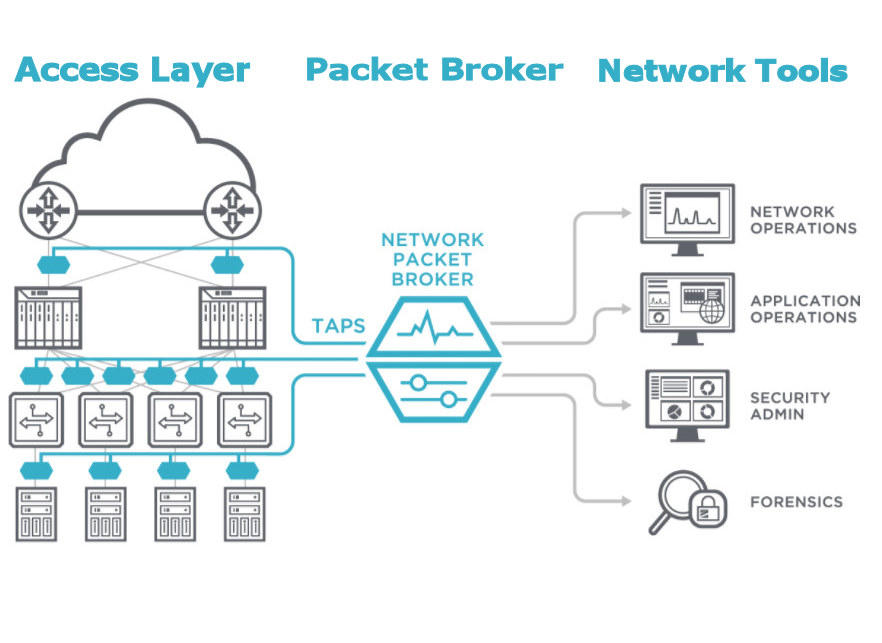Network Visibility
Using a combination of TAPs, Bypass Switches and Network Packet Brokers we can set up a visibility architecture that sits between the IT infrastructure and the tools which gives you access to all the traffic traversing the virtual and physical links.
What is Network Visibility?
Network visibility is the ability to monitor, analyze, and manage network traffic, performance, and security in real-time across all environments. Network visibility enables downstream security and network management and monitoring functions that rely on realtime access to network traffic to function.
Core Network Visibility Solutions
Network Packet Brokers
A Network Packet Broker (NPB) receives data from a number of network links. It then acts as a “broker”, ensuring the relevant data is sent to the right tools within the network.
NPBs make monitoring and security tools more effective, by giving them access to a range of data from across the entire network. Blind spots are reduced, giving tools the visibility they need to identify and tackle performance and security threats.
Network TAPs
A network Test Access Point (TAP) allows the set up of a permanent in-line monitoring device that mirrors all the traffic that is passing between network nodes.
The TAP copies the data continuously, 24/7 to packet brokers, packet analyzers, intrusion detection systems or other security tools, without introducing a point of failure.
Bypass Switches
A Bypass Switch or Bypass TAP is designed to avoid the “single point of failure” with inline security tools.
The Bypass Switch is deployed in front of IPS or Next Generation Firewall (NGFW) appliances and in the event that an active tool fails, Bypass Switch will keep the network link up by bypassing the failed appliance. It acts as a fail-safe point of access and switching, for inline network monitoring.
Visibility Architecture Components
A scalable end-to-end Network Visibility architecture across both physical and virtual networks eliminates network blind spots. A visibility layer allows you to intelligently connect all network data sources with the monitoring or security tools that keep the network running and secure.

Access Layer - TAPs & Bypass Switches
The access layer allows you to get data from network points to monitoring tools. Test Access Point (TAPs) and Bypass Switches mirror all the traffic that is passing between network nodes and pass it to the aggregation layer/packet brokers
Aggregation Layer - Packet Brokers
Network Packet Brokers (NPB) take the packets from the access layer, virtual layer and optimize the network traffic through aggregation, filtering, load balancing, de-duplication from one or many network links to monitoring or security tools.








